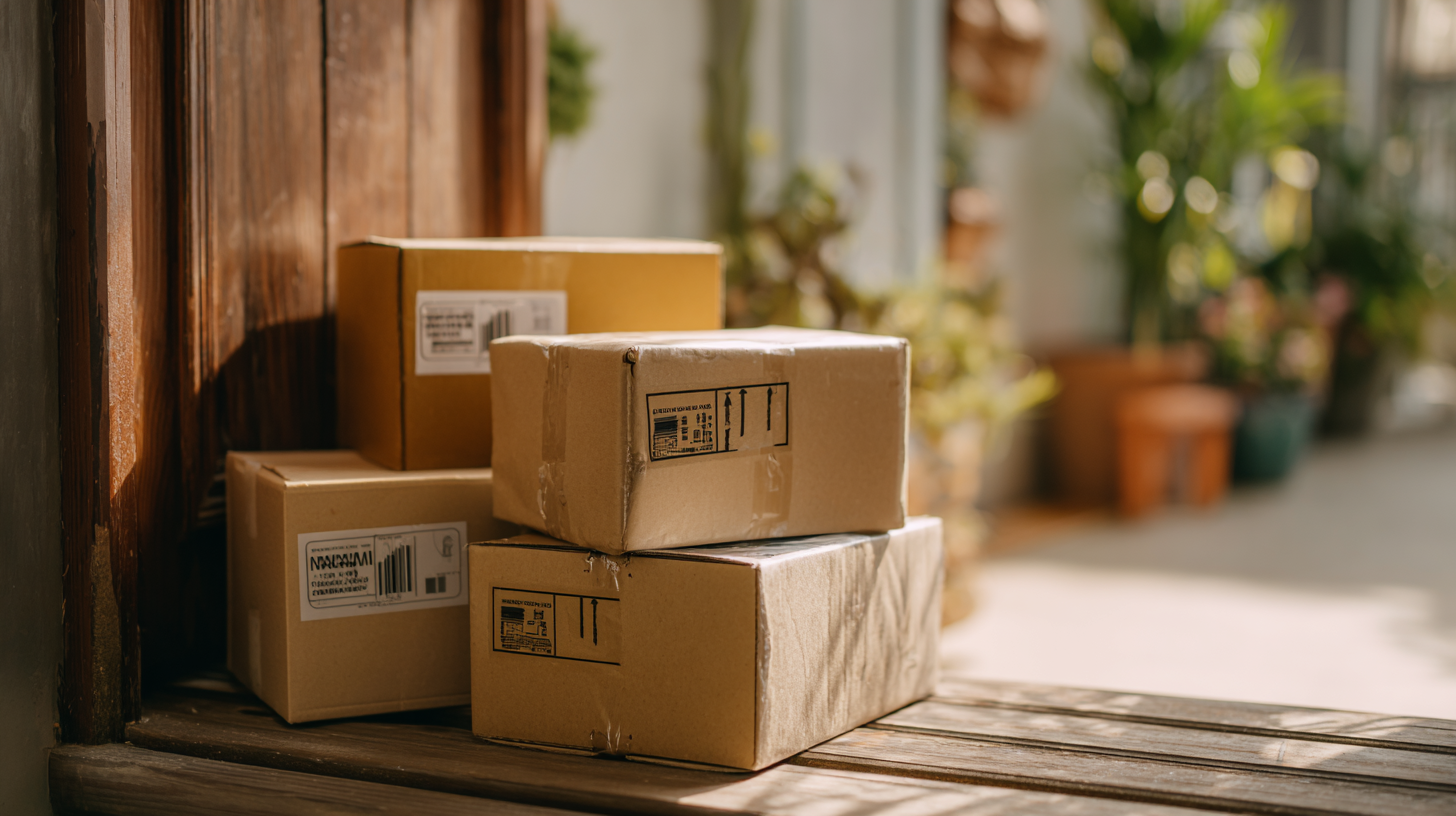Exploring the Rise of Eco-Friendly Shipping Boxes: What 2023 Data Reveals About Sustainable Practices at Home
In recent years, the environmental impact of packaging materials has become a pressing concern for both consumers and businesses alike. With a growing awareness of sustainability, eco-friendly shipping boxes have emerged as a vital component in reducing waste and supporting responsible consumption practices. This article delves into the 2023 data surrounding these innovative solutions, highlighting the shifts in consumer preferences towards sustainable practices at home. By understanding the rise of eco-friendly shipping boxes, we can better appreciate how these alternatives not only contribute to environmental conservation but also enhance the overall shipping experience. As more households embrace sustainability, the demand for greener shipping boxes at home is expected to flourish, marking a significant shift in the way we think about packaging in our daily lives.

Understanding the Environmental Impact of Traditional Shipping Boxes in 2023
The environmental impact of traditional shipping boxes in 2023 is significant, as data from the Environmental Protection Agency (EPA) indicates that packaging waste accounts for approximately 30% of total municipal solid waste. In particular, cardboard packaging, which is widely used for shipping, contributes to deforestation, greenhouse gas emissions, and energy consumption during production. Reports show that producing a single ton of cardboard generates about 900 pounds of CO2 emissions, highlighting the urgent need for sustainable solutions.

In response to growing environmental concerns, the shipping industry is increasingly adopting eco-friendly alternatives. A recent study by Smithers Pira revealed that the global market for sustainable packaging is projected to reach $500 billion by 2026, driven by consumer demand for greener options. Many companies are now prioritizing recyclable and biodegradable materials, and innovative designs that reduce the overall material used. As 2023 progresses, understanding these trends and their impact on the environment remains crucial for both consumers and businesses committed to sustainability.
Key Statistics on the Adoption of Eco-Friendly Shipping Practices This Year
In 2023, the adoption of eco-friendly shipping practices has seen a remarkable surge, driven by increasing consumer awareness and demand for sustainable solutions. According to recent data, nearly 70% of consumers now prefer brands that utilize environmentally friendly packaging. This shift reflects a growing recognition of the environmental impact of traditional shipping materials, prompting businesses to rethink their packaging strategies. Companies are increasingly shifting to recyclable, biodegradable, and reusable alternatives, with 65% reporting an investment in sustainable packaging innovations this year.

Furthermore, the financial benefits of adopting eco-friendly shipping practices are becoming increasingly evident. Research indicates that companies implementing sustainable packaging solutions have experienced a 30% increase in customer loyalty, as consumers align their purchases with their personal values. Moreover, reducing packaging waste has not only enhanced corporate image but has also lowered shipping costs, with 40% of businesses reporting cost savings tied to streamlined, eco-friendly practices. The data illustrates that sustainable shipping is not merely a trend but a practical approach to business that resonates with consumers in 2023.
Innovative Sustainable Materials Revolutionizing Shipping Boxes in 2023
The landscape of shipping boxes is undergoing a significant transformation in 2023, driven by a growing consumer demand for eco-friendly options. Innovative sustainable materials are at the forefront of this revolution, with companies increasingly turning to alternatives that minimize environmental impact. From biodegradable plastics to recycled paper and fungus-based packaging, these materials not only serve to protect products during transit but also align with the values of eco-conscious consumers. The shift towards such materials reflects a broader commitment to sustainability, as businesses seek to reduce their carbon footprint and waste.
Furthermore, advances in technology have made it possible to produce these sustainable materials at scale, making them more accessible for businesses of all sizes. For instance, plant-based cushioning materials are gaining popularity for their lightweight properties and their recyclable nature, which reduces the overall waste produced by shipping. Additionally, innovations in packaging design are maximizing space efficiency, allowing for fewer boxes and less material consumption. As consumers continue to advocate for greener practices, the shipping industry is evolving rapidly, embracing a future where sustainability is no longer an option but a standard.
Exploring the Rise of Eco-Friendly Shipping Boxes: What 2023 Data Reveals About Sustainable Practices at Home
| Material Type | Percentage of Use (%) | Environmental Impact Rating (1-10) | Cost Efficiency Index (1-10) |
|---|---|---|---|
| Recycled Paper | 35 | 9 | 7 |
| Biodegradable Plastics | 25 | 8 | 6 |
| Corrugated Cardboard | 20 | 7 | 8 |
| Mushroom Packaging | 10 | 9 | 5 |
| Seaweed-Based Materials | 5 | 10 | 4 |
| Other Sustainable Materials | 5 | 6 | 6 |
Top 5 Tips for Choosing Eco-Friendly Shipping Options for Your Business
As businesses increasingly prioritize sustainability, choosing eco-friendly shipping options has become a pivotal consideration. According to a 2023 report from the Sustainable Packaging Coalition, nearly 67% of consumers are more likely to purchase from brands that utilize environmentally friendly packaging. This trend highlights the necessity for businesses to align their shipping practices with eco-conscious values.
When selecting eco-friendly shipping options, first, businesses should assess materials. Opting for biodegradable or recyclable packaging can significantly reduce environmental impact. Additionally, companies like EcoEnclose have reported that using recycled materials for shipping can cut down carbon emissions by up to 60%. Secondly, consider the size of shipping boxes. Utilizing appropriately sized boxes minimizes wasted space and reduces the amount of material used, ultimately contributing to a smaller carbon footprint.
Lastly, businesses should engage with carriers that prioritize sustainable practices. According to research from UPS, over 30% of shippers now choose providers who offer carbon-neutral shipping options. By following these tips, businesses not only enhance their environmental impact but also meet the growing consumer demand for sustainability in every aspect of product delivery.
Consumer Preferences: How Sustainability Influences Purchase Decisions in 2023
In 2023, consumer preferences are increasingly swayed by sustainability, significantly impacting purchasing decisions. A growing emphasis on eco-friendly practices, particularly in packaging, has transformed sustainability from a secondary consideration to a pivotal element in brand loyalty. Research indicates that consumers now prioritize sustainable options, demonstrating a clear shift in mindset. Nearly three-quarters of shoppers actively seek out sustainable packaging, showcasing a profound change in the market landscape.
This trend is especially pronounced among younger generations, notably Generation Z, who prioritize environmental considerations in their buying habits. Their heightened awareness and concern for sustainability not only influence their own choices but also encourage their peers to adopt similar values. As consumers become more discerning about the environmental impact of their purchases, brands are compelled to adapt. Companies that effectively communicate their commitment to sustainability and authenticity stand to gain a competitive advantage in the evolving marketplace, reinforcing the importance of sustainable practices in influencing consumer behavior.
Exploring the Rise of Eco-Friendly Shipping Boxes in 2023
This chart illustrates the consumer preferences regarding eco-friendly shipping options in 2023, highlighting the percentage of consumers who prioritize sustainability when making purchasing decisions.
Related Posts
-

How to Choose the Right Packaging Supplies Boxes for Your Business Needs Based on Industry Trends
-

What is the Importance of Choosing the Right Shipping Boxes for Your Home
-

Harnessing Supply Boxes Trends at the 138th Canton Fair in 2025 for Industry Growth
-

What is the Importance of Custom Design Shipping Boxes for Your Business
-

Maximize Your Logistics Efficiency with Custom Industrial Shipping Boxes
-

Transforming Supply Chains: The Role of Industrial Shipping Boxes in Modern Logistics
